Europe Square
Gorizia is a town in north eastern Italy, situated on the Isonzo River north of Trieste. By treaty in 1947 Yugoslavia received the northern outskirts of the town, and the adjoining Yugoslav town of Nova Gorica was developed. With the breakup of Yugoslavia, the frontier remained as the division between Italy and Slovenia until the implementation of the Schengen Agreement by Slovenia on December 21, 2007. Since May 2011, these towns have been joined in a common trans-border metropolitan zone, administered by a joint administration board. This report is part of a series from a day I spent visiting the borders in this divided town. Links to the right for the other reports as I did them. I visited this point as part of the IBRG SITEX-23 expedition.
Transalpina Square (Italian); Slovene: Trg Evrope, meaning “Europe Square”, is a square divided between the towns of Gorizia, northeastern Italy, and Nova Gorica, southwestern Slovenia. The railway station of Nova Gorica is located at the eastern end of the square, on the Slovenian side. My report on the railway station is here.
From 1947 (Treaty of Paris) an international border between Italy and Yugoslavia (Slovenia since 1991) crosses the square. Until 2004 the square was divided by a border wall; movement on the square is now free because both Italy and Slovenia are EU members and part of the Schengen Area. Before 21 December 2007, free movement was only allowed within the square provided that a person that entered the square from one country returned to that country. An approved border crossing was located 100 m from the square. It is now no longer needed and has not been in use since 2007
Today the square is the cultural heart of the joint towns and in the centre of the square there is a a circular plaque that indicates the border.

The square has additional border markers (one on either side), remnants of the fence which between 1947 and 2004 divided the 2 towns and formed part of the iron curtain. On the Italian side there is a sundial clock.
There are supplementary photographic displays and sculptures all supporting the concept of European unity. In the summer there are concerts and other events. When we visited there was an Italian folk group performing and the event was well supported by both communities.
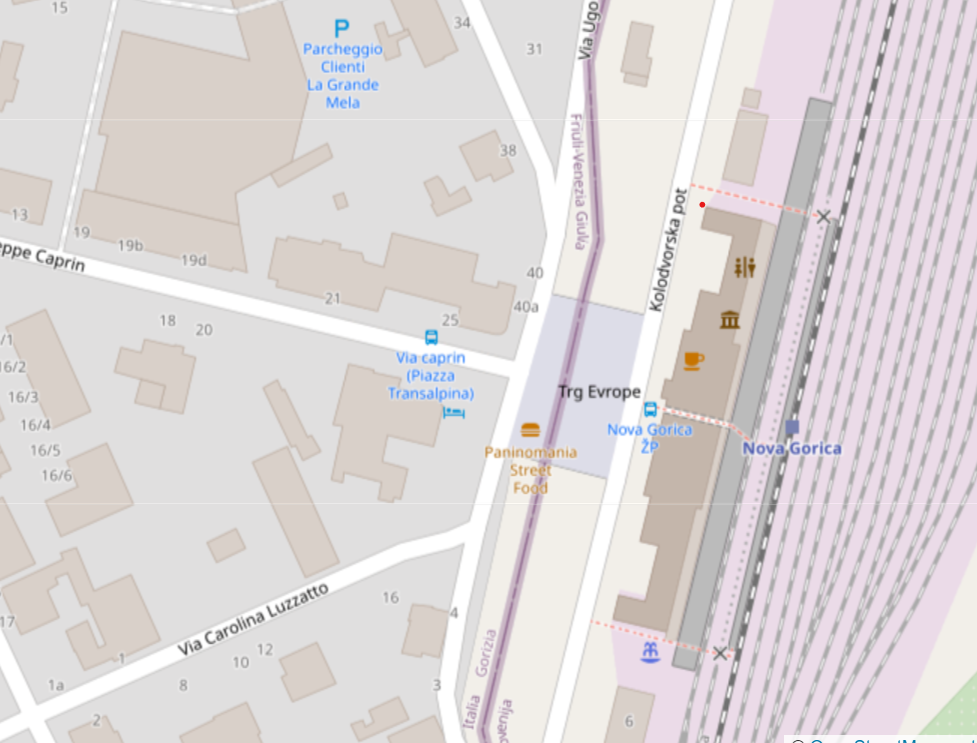
The Square




Remnants of a border
It was easy at the edges of the square to follow the line of the border. There were large border markers and displays of the border when closed, not only during the cold war but also in the more recent COVID pandemic. These remnants stood in stark contrast to the happy atmosphere and how they themselves were simply now somewhere to sit in the sun and have lunch.
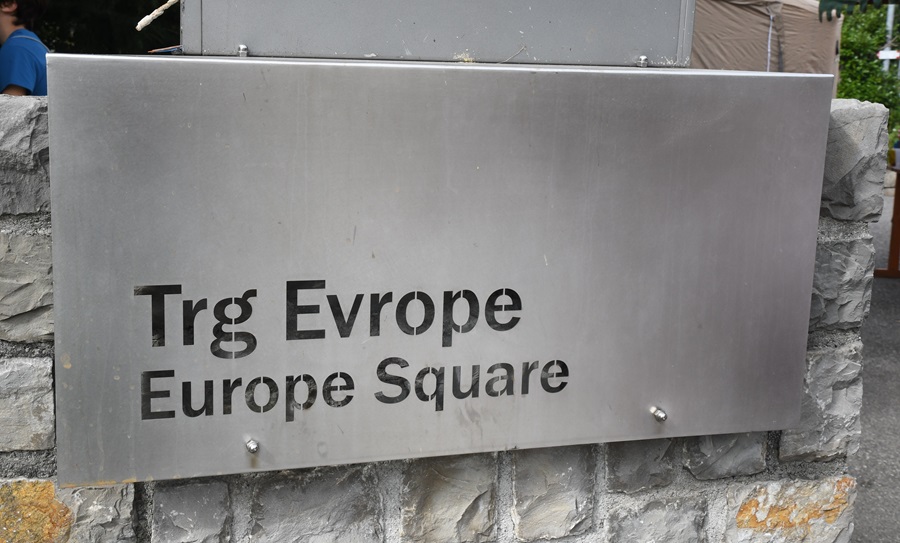
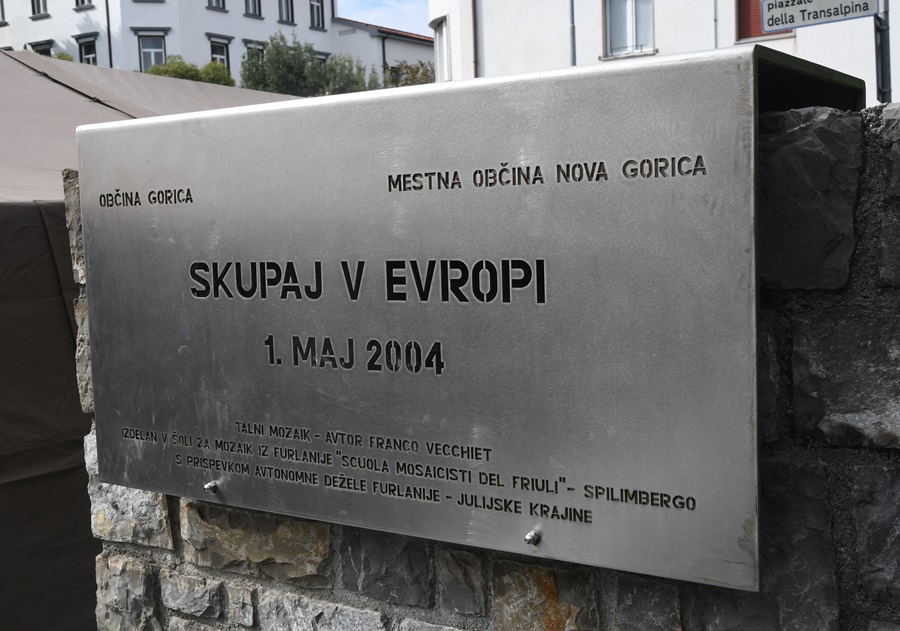
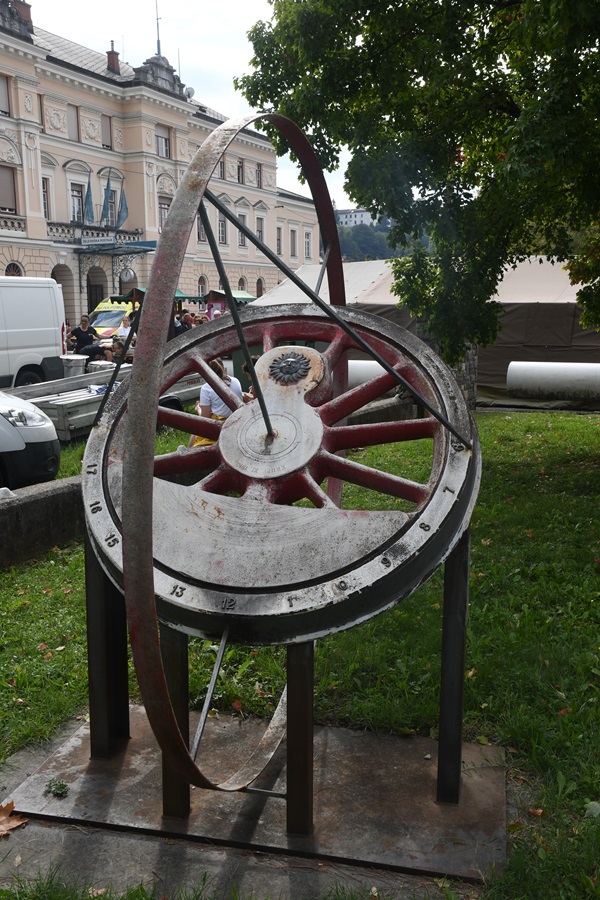
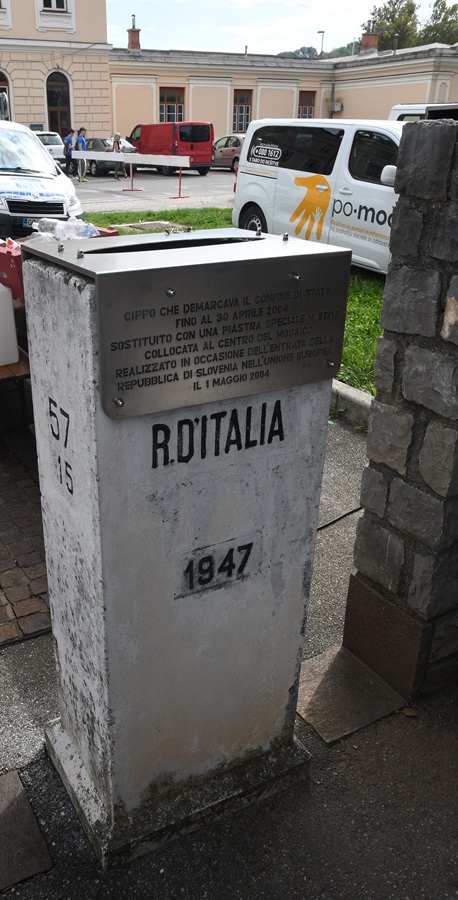


The old Iron Curtain
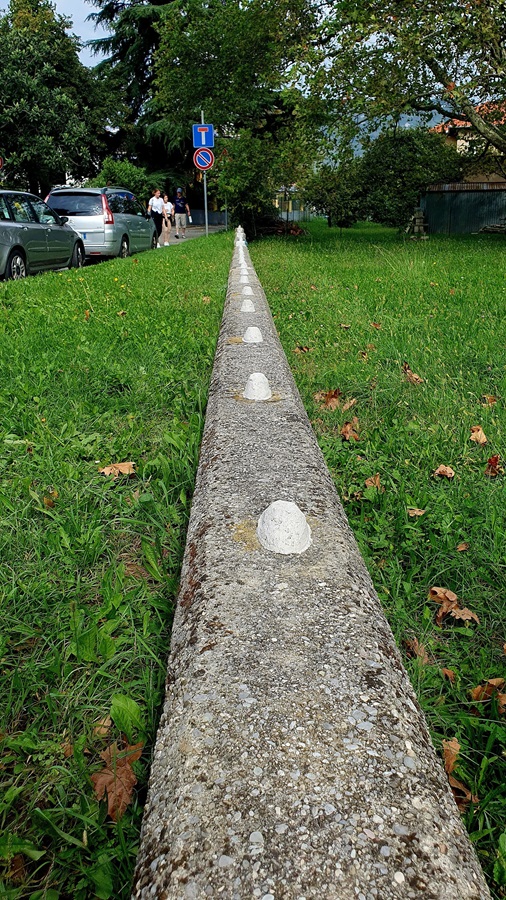

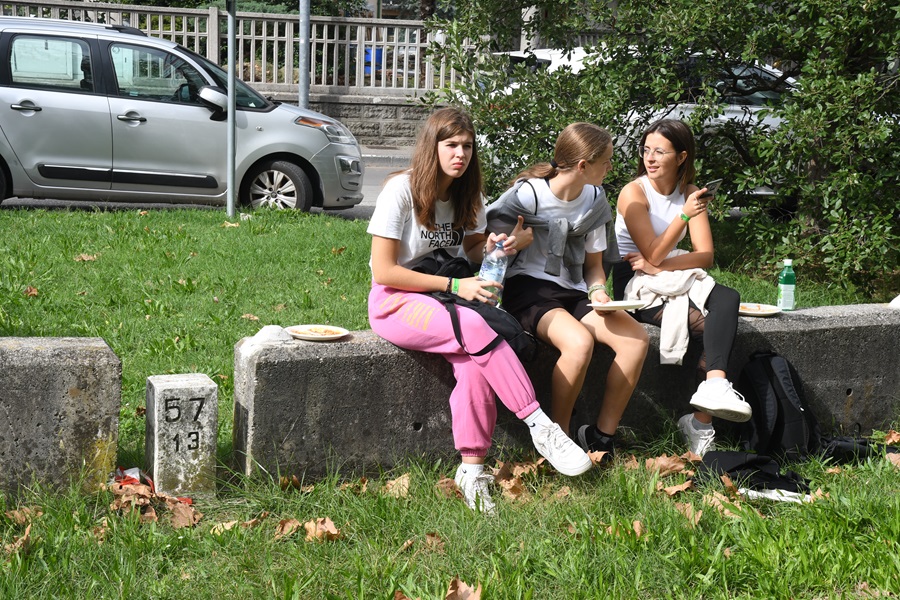
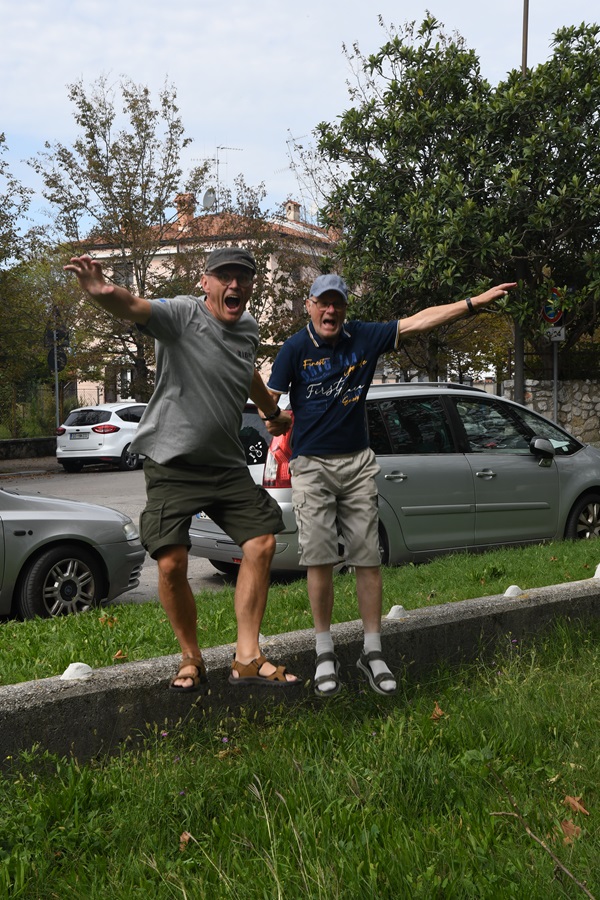

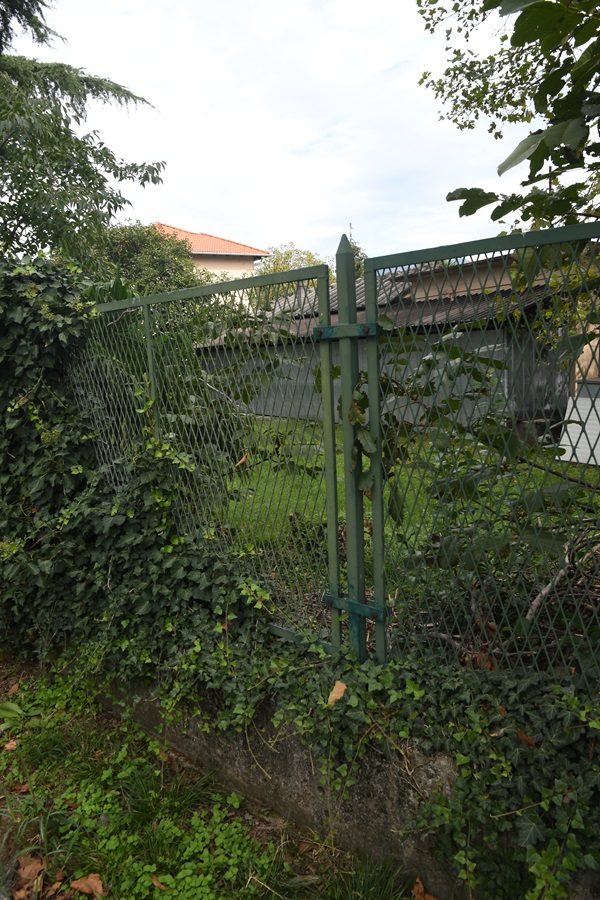
What was fascinating for me was how something that appeared so permanent is now a place to sit and have lunch and enjoy the sun. Although the border in Yugoslavia was not a fortified and elsewhere, and the DDR for example did not allow its citizens to travel there, it nevertheless constituted a barrier that was challenging to cross.
The Festival

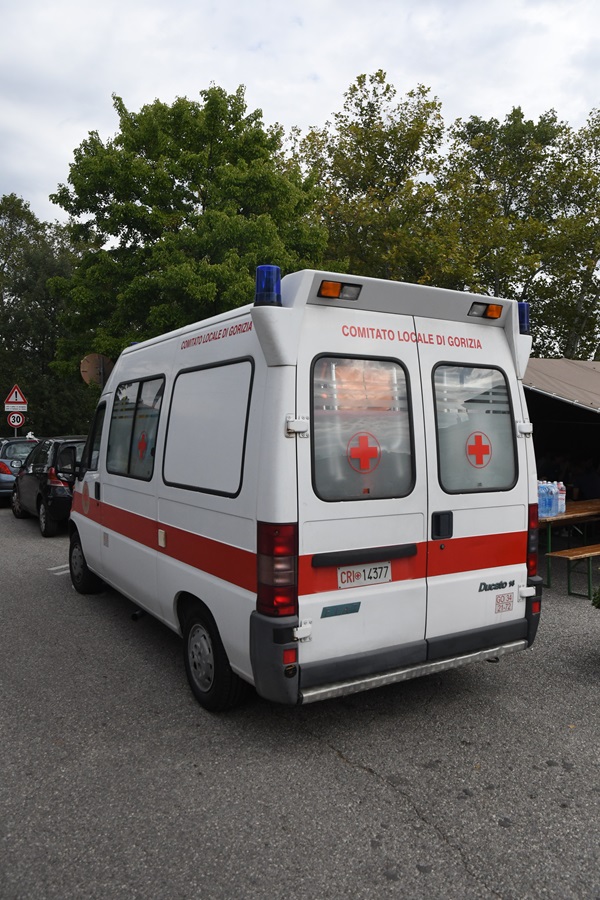
The first thing I noticed was that although the whole emphasis was upon communal and European unity, both counties had their own paramedic vehicles on standby. It is likely if anything had occurred they would have worked together as in border areas there are arrangements in place involving the emergency services.
The children as aways were the focus of the event and I wonder if they were aware of the unity they were so clearly demonstrating.

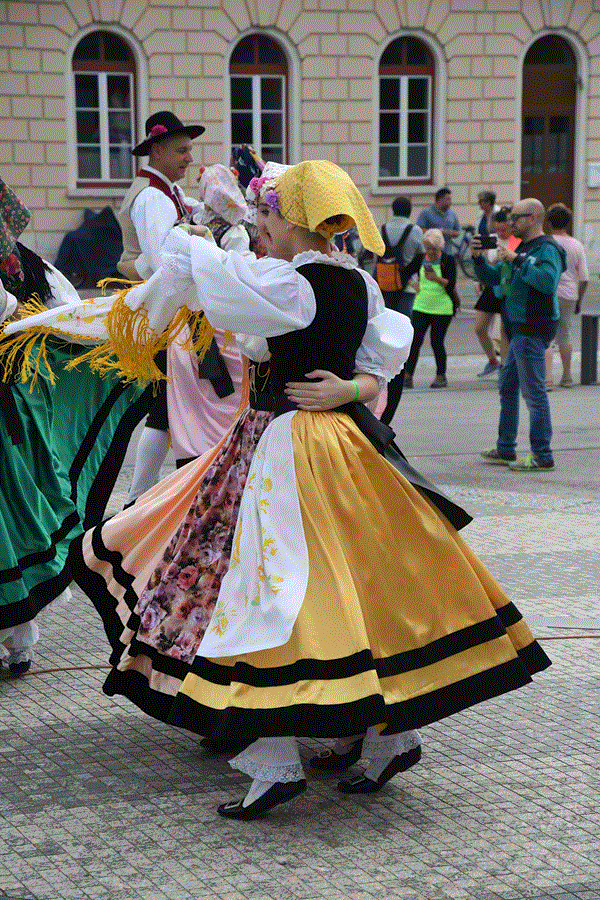



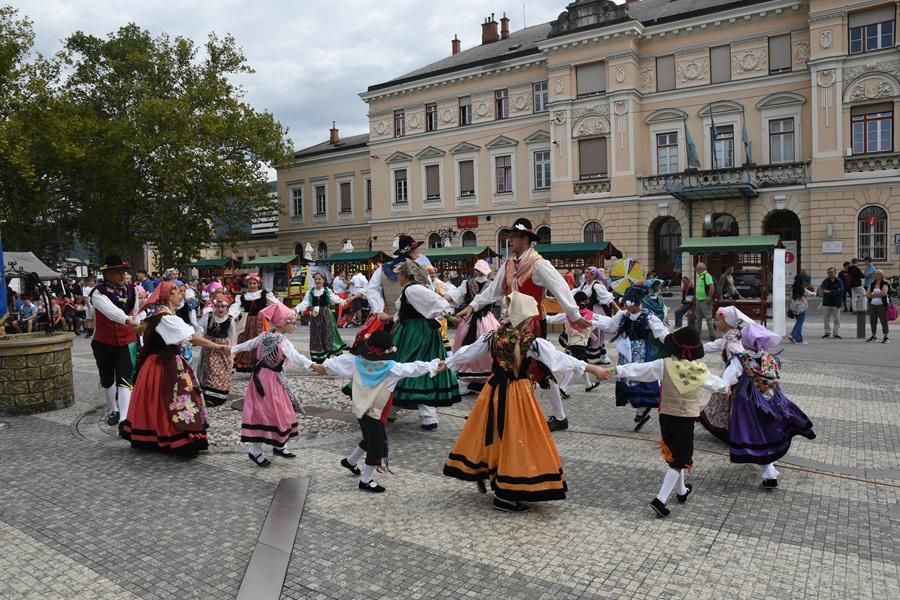
Videos

Date of Visit: 30 September 2023

Hello, Can I use one of your pictures on or website for a trip to Gorizia? Contact me at isabel@reseskaparna.se.
LikeLike